
Thomas Felch |
|
What is Typical Exposure with a 500mm Lens?
|
|
|
|
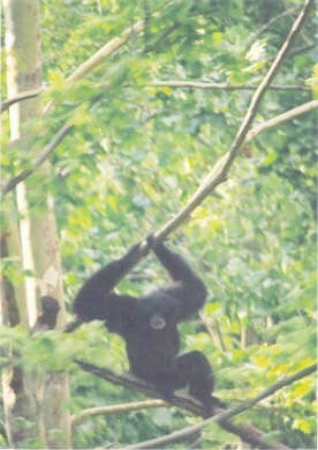
Monkey in Tree
You can see the grain best - though it was a well-lit subject. Shot at -1.
Thomas Felch
|
|
|
|
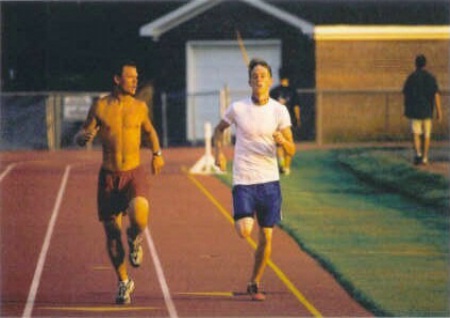
Coaching
Not as bad with the subjects, but background is grainy. Shot at shutter speed 500, -1.
Thomas Felch
|
|
|
|
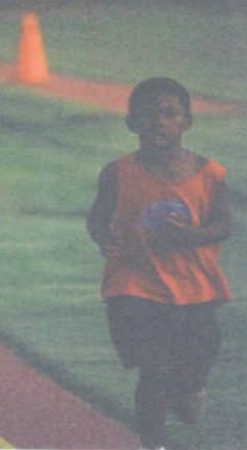
Steven
This is very grainy. I think because there was not a lot of light at this time of day. Shot at shutter speed 750.???
Thomas Felch
|
|
|
|
I just bought a 500mm Sigma lens to use with a Canon EOS. I have been using a 70-300 zoom, usallly at a shutter speed of 125 (outdoors), but I am going to Africa next week and wanted something with a little more power. I have shot 2 rolls:
Most of the first role came out blurry - I think because the shutter speed was set too slow. I am using 200 speed film, and I was setting aperture to -1. I didn't quite realize I was doing this until I got them developed. So, to correct this blur in the first role, I set the shutter speed (still using 200 film) to 500, and sometimes 750. I tried to compensate by going to -1 on a few of them. The pictures didn't blur this time; instead, they were very grainy and didn't get enough light, so they turned out dark.
Do you think I need to set shutter speed higher or can I get by with 125-500? I have a monopod, which steadies the lens nicely. I don't want to use 400 film because I am trying to stay away from anything that will make the picture grainy. Is there a rule of thumb for using a prime telephoto lens, as far as shutter speed and aperture go?
I hope I don't sound stupid asking these questions, but I just don't understand why there is such a difference in quality between the 300mm to the 500mm lenses! Hope someone can help!
August 02, 2002
|
|
|
Jon Close |
|
Could you be more specific as to which 500mm lens? Is it a mirror lens with fixed aperture of f/8, or is it a conventional lens with an adjustable aperture? What is the maximum aperture of the lens? Are you shooting in Tv (shutter priority) or another exposure mode? Your sample pictures are underexposed. When you say you set the aperture to -1, I suspect you are actually setting exposure compensation (the bar scale in the viewfinder) to -1. If you're using a fixed aperture mirror lens this will not matter, but if you are using a conventional lens this is exacerbating your underexposure problem. When properly exposed, 400 speed film is not as grainy as you think. I think that is your best solution. Regarding rules of thumb, to avoid camera shake when shooting handheld you need a shutter speed that is at least as fast as 1/focal length, or 1/500 sec. in your case. But using a monopod or tripod you can use slower shutter speeds. For proper exposure use the guide printed inside the film box, usually a variation on the "Sunny 16" rule (see http://photographytips.com/page.cfm/123 ). Proper exposure is a function of film speed, shutter speed and aperture (f-stop). It does not directly involve the lens focal length. ISO 200, 1/250, f/5.6 gives the same exposure on film whether the lens used is 24mm, 50mm, 100mm, 200mm,... .
August 07, 2002
|
|
|
robert G. Fately |
|
Thomas, like everything else in life, photography is a compromise...you have to figure out the best set of alternatives given the reality you confront. First, the "reality" is how much light is reflecting off your subject. This is something that you are unlikely to alter (unless you bring some pretty big flash units to Africa with you). So the tiger or monkey or whatever has a certain amount of illumination, now the question is what choices do you make. You have control over the other aspects - film speed and shutter speed (and aperture, for that matter). Here's where the compromise stuff comes into play: slower shutter speeds lead to more chance of motion-induced blur. Yes, the 'rule of thumb' is to use 1/lens focal length as the slowest shutter speed for handheld shots, but when you get to the very long lenses (like 500mm) even that's not always enough. It turns out that the blood pulsing through your arteries and veins can cause a certain amount of motion in your arms, and there's nothing you can do about that (short of die). Some pros are able to use slower shutter speeds with long lenses, but that takes a lot of practice. It's true that a monopos can help a bit, but since you are acting as part of that support system (your two legs become the other two of the 'tripod') you will not be able to avoid all motion. A better alternative in terms of stability might be a beanbag, or a window mount (for a car window) or, of course, a tripod. At the very least, you should try to lean against a solid object, again, all in the effort to minimize your body's own intrinsic motion. So far, I've talked about the issue of your camera's motion effecting the sharpness of the photo. However, there is also the matter of the subject's motion - if you use 1/60th second with that 500mm lens mounted on a sturdy tripod, but are shooting an impala (the deer, not the car) leaping over a shrub, the lens will magnify that motion and the resulting picture will be blurred. Of course, with judicious use of panning, sometimes the slower shutter speed is a better option, but that's another topic. You next area of choice is film. As you know, filmspeed is inversely proportional to grain - the faster the film, generally speaking, the grainier it is. But, using faster film gives you the chance to use faster shutter speeds - and a super-fine grained blurry shot is not generally all that appealing. You might want to experiment with other types of 400 (or faster) speed films - and, as Jon C. mentioned, properly expose them. Use print instead of slide film; it has more latitude and is generally more forgiving of exposure errors. Again, my point is there are some things you cannot have - with a given amount of light you are limited to a specific set of shutter speed/film speed combinations (at a given f-stop, which I'll assume you'd leave wide open to get maximum shutter speed). If you don't want to use faster film, and are essentially locked into a relatively fast shutter speed, then the only other option is to buy a faster lens - which of course can get rather costly. Perhaps the best solution would be to take along plenty of film, both slower (ISO 100?) and faster (ISO 400 or 800) since you will probably have the chance to use both in various situations. Hope that helps, Bob
August 07, 2002
|
|
|
Richard Ujhely |
|
I am certainly not a professional by a long stretch, but I thought I would offer a few thoughts: Jon, above, asks a lot of important questions and offers a lot of important information. The only thing I would expand on is my experience.... I have the 200-500 Sigma lens w/ the Canon system. I have never had a lens that had a fixed aperature. But I think it is important to always recongize that proper exposure is always a function of film speed, aperture and shutter speed (as Jon noted). Depending on your situation and how your subject is lighted or positioned you may have to adjust to get the proper exposure.... some examples: I have also gone to Africa. If you are doing the safari thing you should know that your game drives will probably be at sunrise, late morning and sunset. Most of the animals don't do much during the day b/c its too hot and at night is when the predators come out. So, they are most active just after sunrise and just before sunset. This important with regard to lighting. On an early morning game drive light is very low or there are shadows etc. so an example of getting a proper exposure you may need to use faster film or more aperture or a faster shutter speed. Also you may consider where the subject may be in relation to a bright sun... depending on what's in your picture, you may want to throttle down a few stops (by altering aperture or shutter speed) b/c your camera's meter may not be reading the scene properly. Another situation may be in the jungle where there isn't a lot of sun light. The long lenses need a certain amount of light to really perform. Then you really need to help bring in all the light you can with higher speed film, open aperture and high shutter speed. Again, I'm not a professional.... but I hope I'm giving you some things to think about. I found it very challenging working with the light. In the early morning and early evening I used 400 speed film.... late morning or late afternoon I used 200 speed... in the bright sunlight when the sun was over head I used 100 speed. I think you'll find it very difficult just trying to use one shutter speed. Also one other thing to consider is camera shake. That big lens is very difficult to handle. Having a monopod will help... but depending on where you are it may be hard to use. I would recommend picking up one of those bean bags they sell for cameras. On the game drives you are in an open roofed Land Rover, so it makes it really easy to throw the bean bag on the side, put your camera on it and snap away and its very steady. A monopod may work also , but you might bring the bean bag just in case (it could be hard in the car)..... Hope this was somewhat helpful... though this is a great hobby, I haven't mastered photo-speak!!! Have a great time and bring double the amount of film you think you will need!
August 07, 2002
|
|
|
George E. Givens Jr |
|
Sounds like you are using a fixed aperture lens. First thing you can do to improve the quality of your pics is a TRIPOD!!! Your chance of getting a sharp image using a monopod with a 500mm lens is 1 in a 1000 if not more, unless of course it is an image stabilization lens and has a fast aperture. Where a tripod is not an option than use a beanbag support on a stationary object such as a car roof top. Does you camera have mirror lockup? If it does then you use it. Does your camera have spot metering? You should try metering an object in the same light as your subject in spotmeter mode. If your camera doesn't have spotmetering than you will need to understand what the meter is telling you. Meters try to make all scenes medium toned (18% gray). So when you meter a scene that has very light colors the camera will think you have enough light when in actually you do not. So, try opening up 1 or 1.5 stops. Since you can't change apertures you'll have to do this by using a slower shutter speed or by using a faster film. A good thing to do is take a shot at normal exposure and then take a shot at +1ev. For example, if the meter reading is 1/500 @ f8, take a shot at that reading, then open up by using 1/250 @ f8. Now, by doing this if your subject is moving very fast than you will have a blurry subject. Don't be afraid to use a faster film. These days the faster films are a lot better than you think and you probably don't have a choice. Unless you plan on enlarging beyond 11x14 and standing up close to the print than you probably won't even notice the grain. Finally, if you're not satisfied with your lens, go to your local professional camera shop and see if you can rent a better lens. You probably have to put down a considerable deposit but it might be worth it for a once in a lifetime trip. Good luck in Africa and shoot lots of film.
August 07, 2002
|
|
|
Jim Sutton |
|
Tom,
Use and rely on your light meter and always use a tripod whenever possible. If you don't have a light meter, use the sunny 16 rule. A monopod is a handy, but limited device, especially with a 500mm lens. I have a Sigma 170-500mm and get good photos on tripod. As other writers have mentioned, use a bean bag if you are traveling in a vehicle. If you choose to use a 400 ISO film, try Fuji Provia 400F. It has very fine grain for a 400 film, but you'll probably have to buy it in a professional camera store or through a mail order photo store (check the back section of any consumer camera magazine). Take lots of film on your Africa safari.
Jim
August 14, 2002
|
|
|
Thomas Felch |
|
|
|
|
|
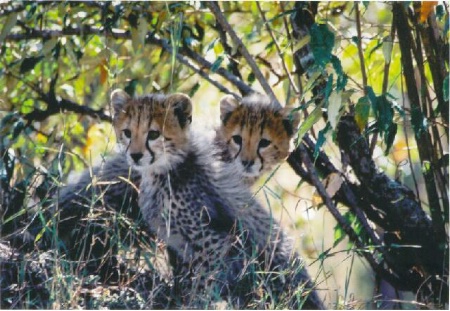
Two of Three
Baby Cheetahs in the Mara
Thomas Felch
|
|
|
|
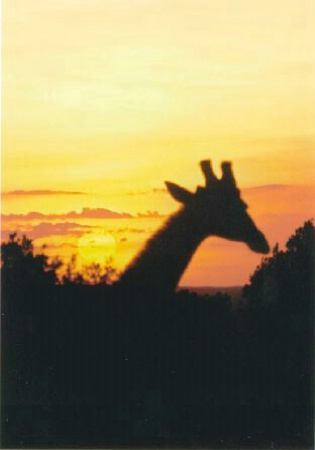
Silhouette
Giraffe Silhouette in Sweetwaters Game Reserve
Thomas Felch
|
|
|
|
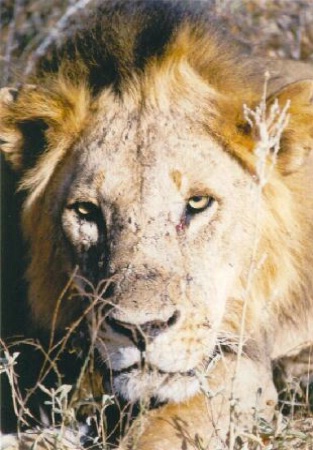
Up Close and Personal
Male Lion in Sweetwaters Game Reserve
Thomas Felch
|
|
|
|
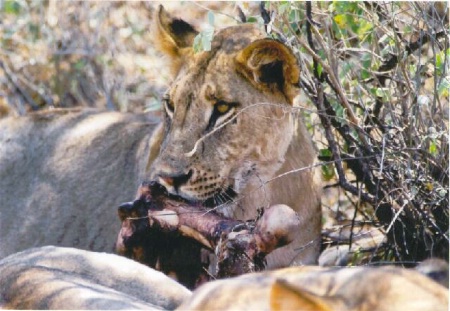
Snack
Lioness with Buffalo Kill
Thomas Felch
|
|
|
|
Hey everyone - thanks for responding... Unfortunately I left before I could read any info. However, Everything that you have said is very helpful for down the road. As it turned out, I ended up shooting mainly at shutter priority or manual with a variety of lenses, and I am extremely pleased with the results. I really wish I had read Richard's response - it would've been the most helpful to know what the lighting would be, but I managed with 200 speed film to keep the shutter anywhere from 180 to 750, bracing a monopod against the top of the van. Next time I will have a beanbag, a tripod, and a more versatile lens! Just so you can see, I'll put 2 or 3 pictures up just for sharing! Thanks again for everything.
August 24, 2002
|
|
|
George E. Givens Jr |
|
Your pics are pretty good. Thanks for sharing. It appears as if you did most of your shooting during midday? Looks like you had a great trip.
August 26, 2002
|
|
|
Thomas Felch |
|
Thanks George - Actually the pictures were taken either between 6:30 (sunrise) in the morning and 9:00, or between 4:00 in the afternoon and 6:30-7 pm. Even though we never had the highest sun for the pictures, it worked out well having the low sun for warmer tones and interesting shadows. Anytime we did see an animal in the middle of the day, it was hiding in the brush so for the most part hidden. I took a ton of pictures, and besides when we were shooting over night at a watering hole, most of the pictures I took came out with just adjusting the shutter speed. Next time I will be sure to bring faster film so I will be prepared for moments like a balloon ride starting at 6 in the morning! Thanks for your continuing interest! I could talk about it all day!!!
August 26, 2002
|
|
|
|
Log in to respond or ask your own question.
|